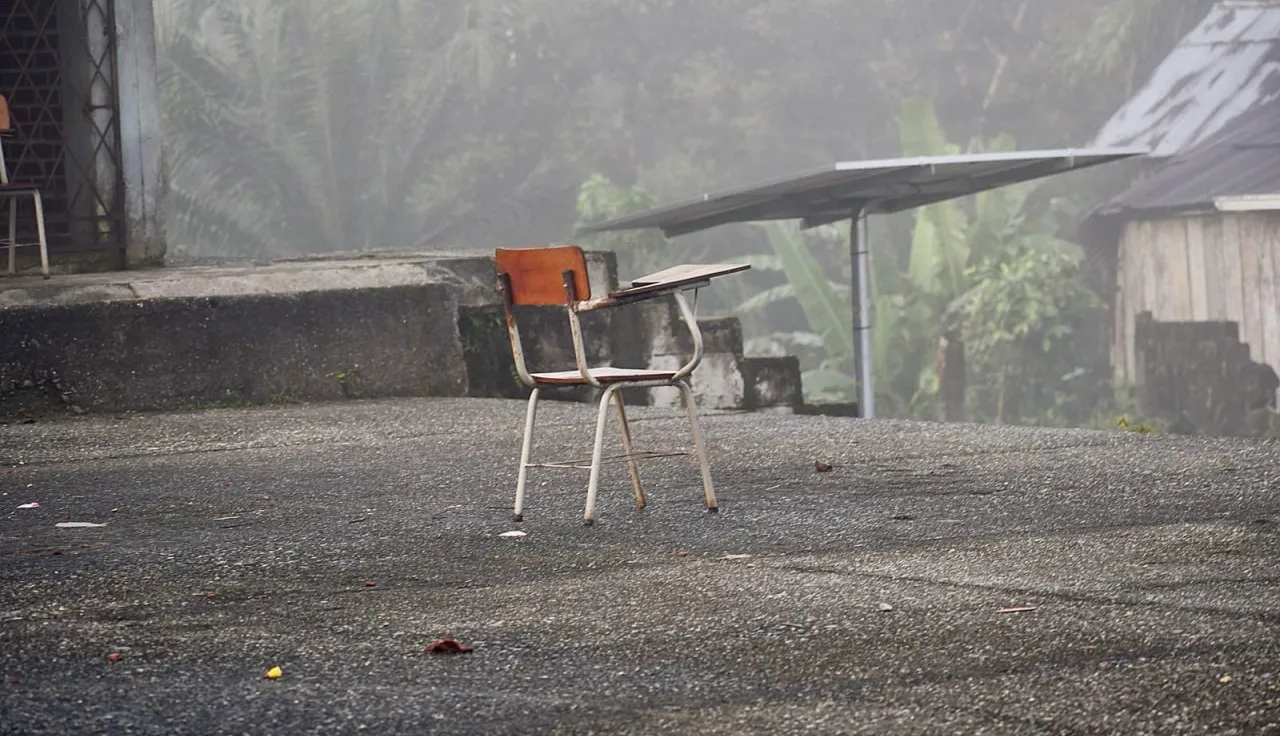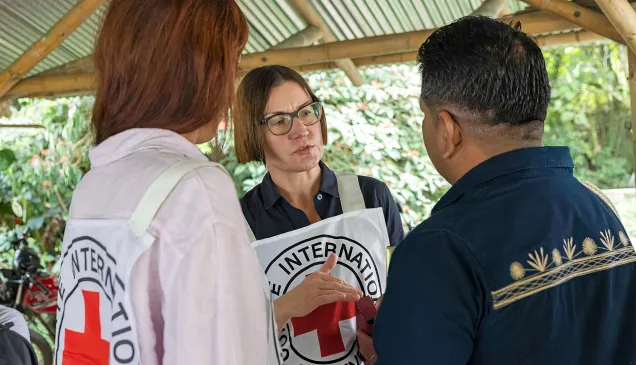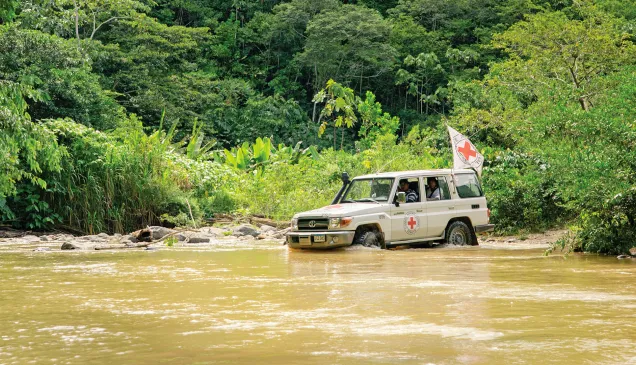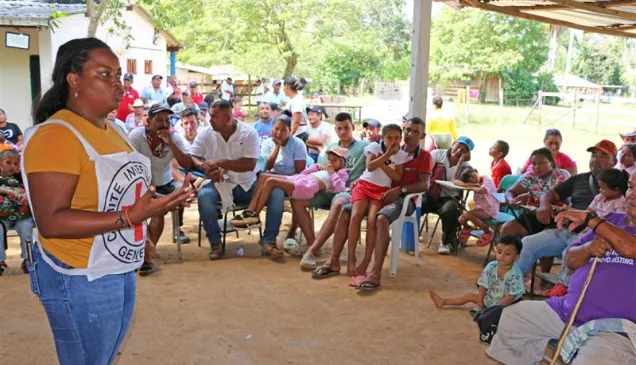Colombia: the impact of armed conflicts on children

In 2024, state and non-state armed actors in Colombia continued to directly involve children in the conflicts. For example, information gathered by our teams in the field showed a large increase in the recruitment, use and participation of children in the hostilities.
Several factors made children more vulnerable to involvement in hostilities: a lack of life opportunities; limited access to education; weakened protective environments; and the presence of armed groups near their communities. These factors exposed them to the strategies used by armed groups to involve children: offers of financial incentives; seduction; recruitment through social networks with promises of money, prestige or power; threats to force them to join or emotional deception to persuade them, for example, making children "fall in love" with a recruiter. This last strategy became a recurrent practice in various areas of the country. Armed groups deceived children to persuade and manipulate them, to link them to the group and to make them consent to sexual demands.
Children who were recruited, used and participated in hostilities were affected in various ways. They were separated from their families, lost their hopes for the future, suffered psychological harm, sexual violence and mutilations, and were wounded or killed in combat. Families were also profoundly affected, especially parents whose children went missing. In 2024, we documented 77 new cases of children disappearing. Sixty-one of these disappearances were related to the hostilities. Of these 61 cases, five were
closed after the children were found alive. In the remaining 56 cases, the search continues and their families are still waiting for answers.
The search requests we received reflect only a small part of the complex picture, but they show how involvement in armed conflict and humanitarian consequences such as disappearance are intertwined. Of the 77 children who we recorded as missing in 2024, 52 per cent are girls and 48 per cent are boys. Twenty-three of them are under 15 years of age and at least 22 belong to indigenous communities. The department of Cauca accounted for 53 per cent of the registered cases.
Establishing the exact number of children recruited or used by armed groups is extremely complex. The official figures do not reflect the magnitude of the problem as many cases go unreported. Many families do not report what has happened for fear of reprisals, because they live in remote areas where the state has little presence or because they hope that their children will return home
No obstante, la percepción de las comunidades afectadas ofrece una visión más clara de la realidad. En el marco de los espacios de diálogo que mantenemos con las poblaciones para abordar los problemas que las afectan y buscar soluciones colectivas a los riesgos y necesidades que enfrentan, realizamos una encuesta a 348 personas de 35 comunidades afectadas por los conflictos armados. De las personas encuestadas, el 58 % señaló que el principal riesgo de protección en sus comunidades es el reclutamiento, uso y utilización de menores de edad, seguido de la contaminación por armas, la violencia sexual y la falta de respeto de los principios de conducción de hostilidades.
However, we were able to get a clearer picture of the situation by talking to the affected communities. We regularly hold meetings with civilians to address the problems affecting them and seek collective solutions to the risks and needs they face. As part of these conversations, we surveyed 348 people from 35 communities affected by the armed conflicts. Of those surveyed, 58 per cent said that the main protection risk in their communities was the recruitment, use and participation of children in hostilities, followed by weapon contamination, sexual violence and lack of respect for the principles governing the conduct of hostilities.
Although the survey sample is small and does not allow us to identify trends at the national level, it provides valuable information on community perceptions. For example, most of the respondents aged between 18 and 49 who identified the recruitment, use and participation of children in hostilities as the main risk said that humanitarian action by the ICRC in their communities has helped reduce children’s exposure to this risk. These communities take a positive view of the confidential dialogues we hold with armed actors and our work to strengthen school infrastructure in some areas of the country. On this last point, several respondents noted that school environments are protective spaces and that children are safer inside their schools.
Children were also severely affected by explosive hazards. In 2024, we recorded 66 cases of children harmed by explosive hazards while going about their daily lives: playing, walking around their communities, attending school, carrying out agricultural work or travelling through public spaces in rural or urban areas. This is a big increase compared with 2023, when 24 children were direct victims of explosive hazards. Of the children harmed in 2024, 34 were victims of launched explosives and controlled detonation devices, and 32 of anti-personnel mines and explosive remnants of war. One child died. The others survived, but their lives will be forever changed by the terrible consequences.
In some cases, explosive hazards cause indiscriminate deaths. Even those who survive generally face amputations, multiple surgeries and long periods of physical rehabilitation. In addition to the physical harm, the events cause psychological harm that radically transforms survivors' lives. This situation is especially difficult for children, given their particular vulnerability.
The profound and multidimensional impact of such events affects children's physical, emotional, social and educational development. Moreover, the negative consequences worsen over time, because children are vulnerable and face barriers to accessing the comprehensive care that would allow them to overcome the impact of the accident.



